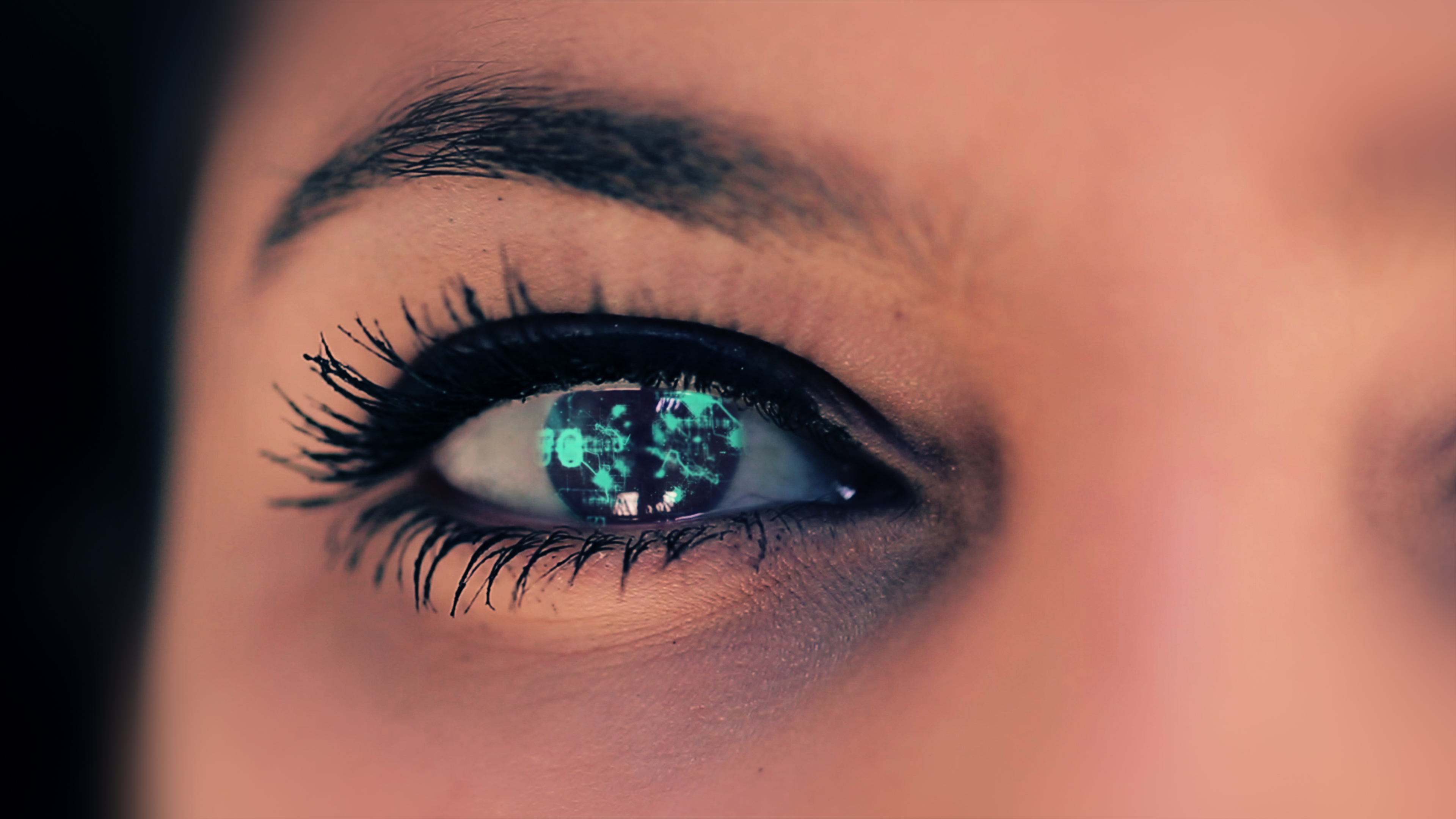How Retinal and Brain Implants Restore Partial Sight
Artificial vision systems utilizing these technologies show promise for individuals with profound vision loss in early trials.
Artificial vision systems utilizing these technologies show promise for individuals with profound vision loss in early trials.

“Could an artificial retina or another type of electronic implant somehow replace the light-sensing photoreceptor cells in my eye and give me back some vision?”
That’s a question that some people ask after being diagnosed with age-related macular degeneration (AMD) and other diseases that destroy those crucial cells. After all, we now have robots that can sense their surroundings, bionic hands, and cochlear implants that allow some deaf people to regain partial hearing.
A paper published in Nature in 2020 announced a landmark advance on the path towards such a treatment for people with retinal diseases.1,2 The authors describe the development of an artificial eye with tiny light-sensing nanowires. (Nanowires are tens of thousands of times thinner than a human hair.) These wires can be packed into the artificial eye even more tightly than the light-sensing photoreceptor cells in natural eyes.
While this was an incredible breakthrough, experts cautioned that it would take years to figure out the next crucial step in producing functional vision. The question: how best to connect the artificial eye to the optic nerve (which sends vision signals to the brain), or to the visual cortex (the part of the brain that decodes these signals).
Scientists have already created systems with implantable devices that have successfully allowed some people to ‘see’ light again after a retinal disease robbed them of that ability.
Read on to learn about the latest developments in the field of retinal implants—from a first-generation retina replacement to newer devices that bypass the need for eye implants entirely.
The Argus II, approved by the FDA in 2013, featured a retinal implant that served as a substitute for dead light-sensing cells. The device successfully provided people with diseases such as age-related macular degeneration and retinitis pigmentosa with a crude form of vision. It also provided evidence that this approach could restore some vision in such individuals, and the hope that future technologies could help even more people.
Here’s how it worked: Using wireless technology, a small video camera on a pair of glasses sent images to a small electronic chip implanted on the patient’s retina. The chip then stimulated cells in the eye, producing images that look like they’re made up of many spots of light.
Because the Argus II could only produce 60 pixels (or dots of light), the resulting images were not very clear or detailed. (By comparison, a healthy human eye has about 1 million “pixels”.)
However, the system restored the ability to perform some basic tasks to people with the inherited eye disease retinitis pigmentosa. These individuals, who previously could see little or no light, were able to read large letters, locate moving objects or people, and detect sidewalk curbs.
Since the quality of these images was significantly lower than what people with AMD can see with their remaining ‘side’ vision, the Argus II offered little benefit to individuals with the disease. The hope was that one day, advances in chip technology would provide better resolution (crisper, more detailed images).
Sadly, the company that manufactured Argus II, Second Sight Medical Technology, discontinued the device in 2019.
In 2020, a team of surgeons and researchers at the University of Pittsburgh Medical Center implanted a device called the PRIMA under the retina of a person with AMD. This individual is the first participant in a U.S. clinical trial of the device; the original, first-in-human study was launched in France in 2017. The five volunteers enrolled in the European study each had significant vision loss due to advanced AMD in one eye and remaining functional vision in the other eye.
The retinal implant used in the PRIMA is a chip that acts like a tiny solar panel, powering itself with near-infrared light. The implant works by stimulating a type of cell (bipolar cell) that survives after light-sensing photoreceptor cells die off due to a retinal disease like AMD. A small projector built into a pair of glasses sends infrared signals to the implant. The implanted chip contains 378 electrodes that turn these patterns of light into electrical signals. The signals activate the bipolar cells, which send the information to the brain.
The PRIMA has at least two major advantages over the Argus II. The PRIMA implant contains many more electrodes, so the images it produces are made up of far more than just 60 pixels. The system also features controls that allow the user to adjust the image brightness and zoom in. However, users still need to train their brains to understand the signals from the device in combination with their natural vision.
In October 2024, Science Corporation, the maker of PRIMA, announced the preliminary trial results of its retinal implant.3 The 38 study participants all had their vision tested twice—once six months after receiving the implant, and again six months later. All of them showed meaningful improvements. On average, participants could read 4.6 more lines on an eye chart than before treatment. Those who improved the most could read nearly 12 more lines. What’s more, during the trial, participants regained the ability to perform tasks such as recognizing playing cards and completing crossword puzzles.
Just as importantly, the implants were still stable under the retina after two years. Plus, study participants did not experience any loss of peripheral (side) vision as a result of the procedure to implant the device.
By June 2025, the European clinical trial had been completed, and Science Corporation announced it had formally applied for approval in Europe (known as a CE mark).4
In addition to improved retinal implants, other approaches to restoring vision are being tested. One of these bypasses the retina—and the rest of the eye— entirely. It does use an electronic chip, but this is implanted in the brain rather than the retina. It directly stimulates the part of the brain that’s responsible for seeing—the visual cortex located in the back of the head. One of the exciting aspects of this approach is that it could potentially help people who have severely damaged eyes or no eyes at all.
A handful of companies are focusing their efforts on making this type of device, and a few people have received such implants in clinical trials. They report having some crude vision restored and even being able to play a “Pac-Man”-like game.
This system originated as the next generation of the Argus II, developed by the same company that produced the original device. (Cortigent, a division of Vivani Medical Inc., is now developing it.)5 However, it has the potential to help people who couldn’t benefit from the older device—people with profound blindness due to causes ranging from glaucoma and diabetic eye disease to trauma.
Like its older ‘sister’, the Orion uses a tiny video camera worn on a pair of glasses to capture images. A pocket-sized processor receives the images and translates them into electrical pulses. These signals are sent to a wireless receiver, then travel to a 60-electrode chip that has been surgically placed on the brain’s visual cortex. The wearer can then ‘see’ dots of light that make up patterns. As with the Argus II, people using the device must learn how to interpret these patterns.
In 2017, six people with profound blindness received the implant as part of an early feasibility study funded by the National Institutes of Health. In 2023, Orion’s parent company announced that this study had completed its fifth year.6 Using the device, participants were better able to perform real-world tasks, such as navigating a sidewalk, finding a doorway, and locating an object.
Cortigent is currently refining the Orion system to prepare for a clinical trial, which is expected to commence in 2027.7
Neuralink has successfully piloted brain implant technology that enables people with paralysis to use their thoughts to control devices such as computers and phones. This type of system is known as a brain-computer interface.
So far, the company’s artificial vision system, Blindsight, has reportedly shown success in tests with monkeys. Neuralink has received preliminary approval for early human studies in the US, Canada, the UK, and the EU. The company reported plans to implant the device in the first human volunteers by 2026.8
Blindsight’s brain chip uses 36 flexible threads that are sewn into the visual cortex by a robot. Each of these contains 32 electrodes, totaling approximately 3,000. A small camera on a pair of glasses captures digital images, which it sends to a smartphone. Software on the phone translates the pictures into signals that are wirelessly transmitted to the brain chip. It’s not yet known whether the high number of electrodes will produce high-quality images. Some outside experts have published research suggesting this may not be the case.9
The ICVP system uses a brain implant containing 400 electrodes.10 The user wears a sort of headband fitted with a device that activates the implanted electrodes. A small camera attached to a pair of glasses transmits signals directly to the implant.11 This allows the user to ‘see’ patterns composed of spots of light, similar to blips on a radar screen.
In 2024, the group of researchers who developed the technology reported achieving two years of successful testing in the first person to receive the implant. This individual had previously lost his vision due to complications and infections following surgery for a detached retina. With the device, he has been more able to navigate and perform basic tasks that depend on vision. The research team (which spans several universities and research institutions) has received funding from the National Institutes of Health to study the device in volunteers who lost vision as adults.
Systems using electronic implants can restore a crude form of artificial vision to people who have previously lost their sight. Those that send signals to a chip in the brain could have the potential to help people with profound blindness due to causes ranging from glaucoma and age-related macular degeneration to the loss of both eyes.
BrightFocus Foundation is a premier global nonprofit funder of research to defeat Alzheimer’s, macular degeneration, and glaucoma. Since its inception more than 50 years ago, BrightFocus and its flagship research programs—Alzheimer’s Disease Research, Macular Degeneration Research, and National Glaucoma Research—has awarded more than $300 million in research grants to scientists around the world, catalyzing thousands of scientific breakthroughs, life-enhancing treatments, and diagnostic tools. We also share the latest research findings, expert information, and resources to empower the millions impacted by these devastating diseases. Learn more at brightfocus.org.
Disclaimer: The information provided here is a public service of BrightFocus Foundation and is not intended to constitute medical advice. Please consult your physician for personalized medical, dietary, and/or exercise advice. Any medications or supplements should only be taken under medical supervision. BrightFocus Foundation does not endorse any medical products or therapies.
Help Fight Macular Degeneration and Save Sight
Your donation helps fund critical research to bring us closer to a cure for this sight-stealing disease and provide vital information to the public.
Donate Today